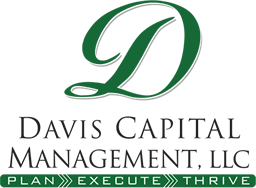
When it comes to saving and preparing for retirement, many Americans find themselves needing help. Studies show that the retirement income gap is steep enough that if it continues at its current trajectory, six major economies will outlive their savings by eight to twenty years. That’s why policymakers revamped the SECURE Act of 2019 to empower individuals to reach their savings goals. Here’s everything you need to know about the Secure Act 2.0 legislation and how it can provide more flexibility upon retirement.
Secure Act 2.0 Highlights
President Biden signed the Secure Act 2.0 legislation into law in December 2022. Here’s the highlights of what’s changed and how they can impact your retirement savings goals.
Higher Age Threshold for Retirement Minimum Distribution (RMD)
Individuals’ threshold age to take their required minimum distribution was raised from 72 to 73 on January 1, 2023. This provision allows individuals to postpone their RMD until the April following the year they turn 73. On January 1, 2033, the threshold for RMDs will increase to the age of 75.
401(k) Automatic Enrollment
Currently, employers have the option to automatically enroll employees into a 401(k) plan. Starting in 2025, that auto-enrollment will be mandatory for most major employers. The amount deferred will range from 3% to 10% of the employee’s annual income. Employees can still opt out if they do not want to participate.
QLAC Limit Changes
The maximum amount used to purchase Qualified Longevity Annuity Contracts (QLACs) was increased from $145,000 to $200,000 in 2023. Also, the 25% of the account balance limit for QLACs has been lifted.
Increased Catch-Up Contribution Allowance
Catch-up contributions allow individuals aged 50 or older to contribute additional funds to their retirement savings within a yearly limit. The new Secure Act 2.0 legislation will increase the catch-up contribution allowance to a maximum of $10,000, with the maximum indexed for future inflation.
529 Plan Rollovers
Currently, leftover balances from the 529 Education Savings Plan can be taken as a non-qualified distribution, meaning it is subject to tax implications and a 10% penalty. Starting in 2024, $35,000 can be rolled into a Roth IRA plan, subject to limits and restrictions.
Roth Employer Plan Changes
Effective in 2023, employees can choose to have employer-matched contributions made to their Roth 401(k) plan, and employers can create Roth accounts for SIMPLE and SEP retirement plans. In 2024, RMD requirements for workplace Roth plans will be eliminated.
Employer Contributions for Individuals with Student Loan Debt
Starting in 2024, employers will be able to make contributions on behalf of employees who are still repaying their student loans. Even if those employees don’t contribute to their workplace retirement plan, employers would still be able to match the amount of student loan debt repaid by the worker for a given year.
Federal Saver’s Match Established
Starting in 2027, individuals who meet lower income thresholds will be eligible for a saver’s match of 50% of their first $2,000 contributed to their retirement plan. This federal matching contribution of up to $1,000 will be deposited into the individual’s Traditional retirement account.
Penalty-Free Withdrawals Exceptions
Provisions in the Secure Act 2.0 expand the circumstances for penalty-free withdrawals. These circumstances include terminal illness, hardship due to domestic abuse, and accommodation for long-term care contracts. Not all changes are immediate, so consult your financial planner to learn more.
Qualified Charitable Distribution Changes
Individuals can distribute up to $100,000 annually from their Traditional IRA to a qualified charity, which can reduce taxes. Starting in 2024, the maximum contribution amount will increase based on the inflation rate, allowing individuals more flexibility with their charitable giving plans.
Provisions made in the new Secure Act 2.0 legislation were created to empower and provide flexibility for those saving for retirement. By partnering with Davis Capital Management for your retirement planning, you can safely navigate the benefits of this new legislation and ease into a long, fruitful retirement.

